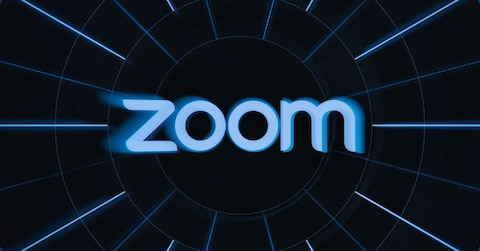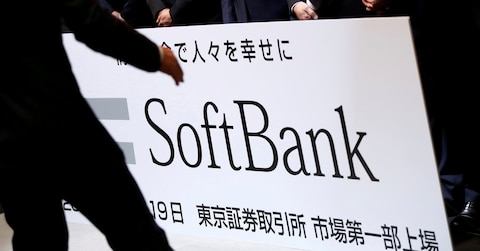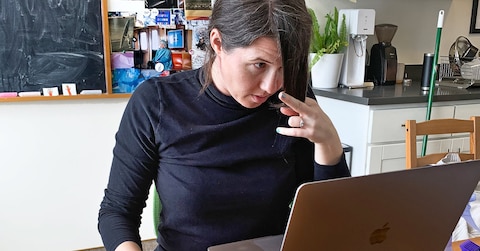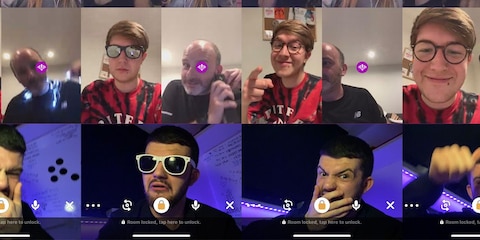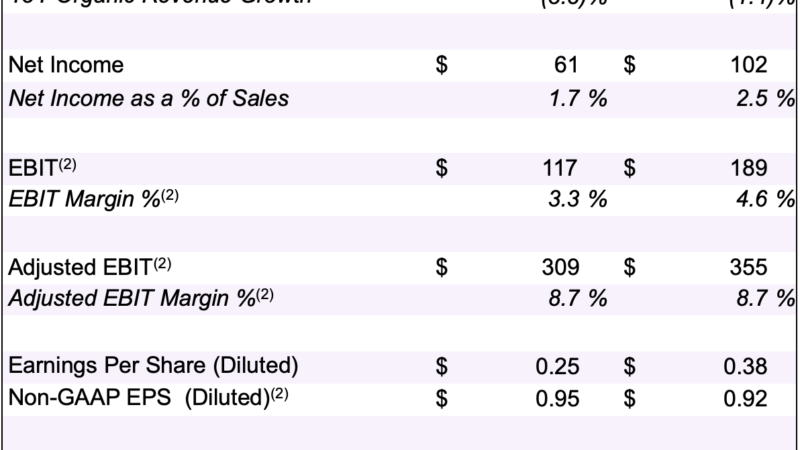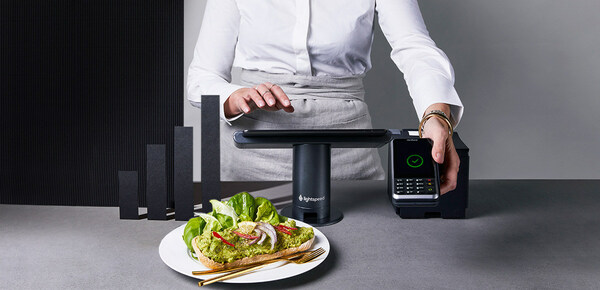Analysis | The Technology 202: There are a lot of questions about Google and Apple’s big coronavirus effort – The Washington Post
with Tonya Riley
Note to readers: The Technology 202 is operating on a limited schedule this week, publishing only Tuesday, Wednesday and Thursday. We’ll be back to our regular schedule next week.
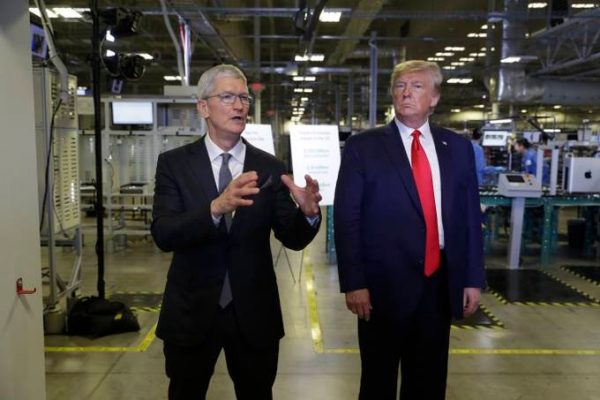
Apple CEO Tim Cook and President Donald Trump speak during a tour of an Apple manufacturing plant, Wednesday, Nov. 20, 2019, in Austin. (AP Photo/ Evan Vucci)
Ctrl + N
Apple and Google’s plan to create tools allowing people to track whether they’ve come into contact with someone infected with the novel coronavirus is an ambitious effort that could help normalize the country.
But there are still many unanswered questions about the efficacy of the nascent partnership, as well as similar efforts — and whether consumers can trust the tech giants and governments around the world not to abuse a system that would rely on sensitive health data.
The business rivals announced last week they’re developing technology health officials can use to build virus contact tracing apps, which are being increasingly viewed as critical to safely reopening the economy. Much like the Massachusetts Institute Technology initiative we wrote about last week, the system would harness Bluetooth — the same technology connecting wireless headphones or keyboards to smartphones — to sense other nearby smartphones. An infected individual would indicate their status in the app, which would in turn notify people who have come into contact with that user over the past two weeks — without sharing the infected user’s actual location.
Such technology is being designed with critical nods to privacy: It would be entirely up to participating individuals to report to the app they were infected. Google and Apple say the infected person’s identity would not be revealed, and neither would their precise location. The companies yesterday told reporters governments can’t force their citizens to use the technology and clarified only government officials would be able to access their tools to create health apps.
Yet even with those fears being tackled, observers worry such technology has some seriously significant shortcomings.
“Everyone seems to have foregone conclusion the country needs to reopen and to do so, we need some sort of surveillance app,” said Ashkan Soltani, a former Federal Trade Commission chief technology officer and privacy consultant. “It is surprising because of the limits of the technology are such that it might not actually provide the value that we really want.”
Here are some of the outstanding questions:
Will enough Americans opt in to digital contact tracing tools for them to work?
Many people need to use the contact tracing apps for there to be a tangible impact on public safety. One of the initial points of friction will be getting people to download them. Apple and Google’s tool will be rolled out in two phases. In mid-May, the companies plan to make technology available to health officials to build apps for the public. The companies will help the health officials develop the apps, and they’ll be available free to download.
In a couple of months, the companies are planning to update both the iPhone and Android operating systems so that people can start using the Bluetooh service before they download an app — ensuring a wider range of people can access the service. With the updated systems, someone could be notified that they’ve had a contact with an infected individual and then be directed to download the app.
But no one knows yet how willing people will be to download an app and self-report a coronavirus diagnosis. Like social distancing or hand washing, the effectiveness of these apps is entirely dependent on how many people use them, and experts are skeptical adoption will be widespread.
“I don’t think these apps will have the levels of uptake required to make them useful for public health,” Farzad Mostashari, a former national coordinator for health information technology at the Health and Human Services Department, told me. “That’s because the likelihood of an infectious contact being captured requires both the case AND the contact to have the app.”
“Think of it like rolling a pair of dice,” said Mostashari, now the chief executive of health care start-up Aledade. “You’re not just trying to roll a 6, you’re trying to roll a double 6.”
Ross Anderson, a University of Cambridge professor, wrote a blog post detailing the pitfalls of such tech. He says that a Singapore Bluetooth-based contact tracing app only has an adoption rate of between 10 and 15 percent.
“If the app’s voluntary, nobody has an incentive to use it, except tinkerers and people who religiously comply with whatever the government asks,” he wrote.
The companies say they’ve focused on making sure that strong privacy safeguards are in place to ensure that people are widely comfortable downloading the app.
Apple and Google say governments can’t force their citizens to use the service. But how much of a choice will people have?
Though the government won’t be able to make using the contact-tracing app compulsory, privacy advocates are worried that employers or businesses could.
“We could see a requirement that the app be used to return to work, to go outside and travel and to go shopping in a grocery store,” Soltani said. “It would be effectively compulsory, even though the policy will be opt-in.”
Mostashari cautioned that government needs to act to ensure that’s not the case.
“I think that the government actually has a role in ensuring that these apps are not compulsory, and not used coercively, whether that’s by employers or schools or municipalities,” he said. “People should have the right to freely choose whether they want to participate or not, especially since there is a risk of these tools being co-opted for other purposes. “
Is this Bluetooth-based technology even going to work?
Using Bluetooth to track the spread of a disease is still largely unproven. Experts say this form of proximity tracking is more accurate and less invasive than actual location tracking. But as anyone who has ever used Bluetooth knows, it can be fickle and there are serious concerns about basing public health decisions on it.
“Bluetooth has promise, but it is extremely experimental and has problems,” John Scott-Railton, a senior researcher at the Citizen Lab at the University of Toronto’s Munk School of Global Affairs and Public Policy, told my colleagues. “We’ve all spotted our neighbor’s Bluetooth speaker through a wall or a floor. Or seen someone’s headset in a traffic jam. That doesn’t mean we will ever come within droplet distance of them. Until engineers reliably figure out how to map Bluetooth onto droplet distance, the approach is bound to yield a lot of false positives.”
Do contact tracing apps even matter if people with coronavirus symptoms can’t get tested?
Contact tracing apps can’t alert people if they’ve come close to a contagious individual unless that individual knows they’re infected. But many Americans report they still can’t access tests.
“We need widespread testing, we need traditional contact tracing by teams who do this,” said Andrew Crocker, a staff attorney at the Electronic Frontier Foundation. “Only once those things are in place is anyone saying these apps should be used.”
“These apps have their place, but they’re really the icing on the cake, not the cake itself,” he added.
Public health authorities could determine ways to verify if someone is positive. For instance, the United Kingdom will give people who test positive for the virus a QR code to mark themselves as positive in its public health app.
How exactly are U.S. public health officials going to use this system?
The tech companies designed the system in a manner that puts much of the power and responsibility in the hands of the public officials developing health apps based on it. But so far, U.S. officials haven’t said how they might use such technology and what exactly they’ll tell people to do when the system tells them they’ve been exposed to someone with coronavirus. Will they tell the person to go get a test? To start self-isolating? That remains to be seen.
President Trump said Friday the White House will take a “very strong look” at the plan, but few details have been released since.
These are just some of the top outstanding questions about this new effort, and I expect we’ll be dissecting this topic more in the coming weeks and months. What other questions do you have about the tech industry’s role in contact tracing? Please shoot me an email at Cat.Zakrzewski@washpost.com
BITS, NIBBLES AND BYTES

A family member of an employee holds a sign outside a Amazon warehouse in Romulus, Mich. (AP Photo/Paul Sancya)
BITS: Amazon fired two tech employees who recently criticized the company for not doing enough to keep warehouse workers safe during the coronavirus pandemic, my colleague Jay Greene reports. The virus is rapidly hitting the company’s warehouse workforce, infecting workers in at least 74 warehouses and delivery facilities, according to Amazon and media reports.
Emily Cunningham, a user experience designer who says she was fired late Friday afternoon, had recently tweeted she would match donations up to $500 to Amazon warehouse workers. She said a “‘lack of safe and sanitary working conditions’ puts them and the public at risk.”
Maren Costa, a principal user experience designer, said she was also fired Friday. Costa also offered to match donations of up to $500 for the warehouse workers, and she has retweeted criticism from Cunningham, as well as from groups supporting the activist warehouse workers.
Both fired employees were also outspoken about the company’s climate policies and members of the group Amazon Employees for Climate Justice.
Amazon spokesman Drew Herdener said in a statement that the company fired the workers for “repeatedly violating internal policies.”
“We support every employee’s right to criticize their employer’s working conditions, but that does not come with blanket immunity against any and all internal policies,” Herdener told Jay. (Amazon chief executive Jeff Bezos owns The Washington Post.)
Both Cunningham and Costa believe they were fired for their outspokenness.
But there are signs of more collaboration between corporate tech employees and warehouse workers. Yesterday they launched a campaign with tech workers at companies including Amazon, Microsoft and Google to further pressure the retail giant:
“At the end of the day we have the same problem, which is that workers have very little control of the policies at these companies,” said organizer Matt Smith. Smith handles cargo at an Amazon facility in Kent, Wash. Last month, Amazon fired Chris Smalls, a warehouse worker, after he raised concerns to media outlets, including The Post, about working conditions.
The firings come as Amazon announced it would hire an additional 75,000 warehouse workers to meet increased demand brought on by the coronavirus pandemic, in addition to the 100,000 the company added over the past month. The company will also allow third-party sellers to resume shipping nonessential items to its warehouses, Dana Mattioli at the Wall Street Journal reports.
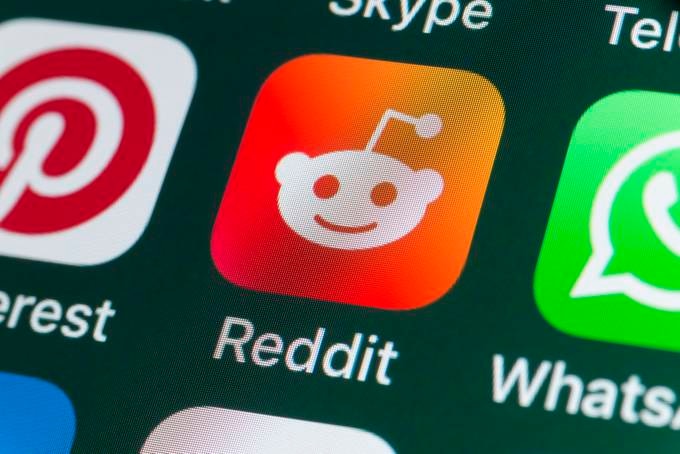
The Reddit app.
NIBBLES: Reddit will start publicly disclosing its political advertisers and how much they spent dating back to January 2019, Politico’s Cristiano Lima reports.
Neither President Trump nor former vice president Joe Biden, the presumptive Democratic nominee, have run ads for 2020, according to the database. But the move shows how even smaller social media platforms are pushing for transparency under scrutiny from Washington.
Facebook, Google and Twitter introduced similar archives over the past two years under pressure to prevent foreign actors from using their platforms to influence voters. Twitter has since banned political ads altogether — an action that Reddit likely won’t take, vice president and general counsel Ben Lee told Cristiano.
“Just kind of getting rid of political ads doesn’t strike me as the right approach in this context,” he said, adding that Reddit collects far less personal information on users that can be used for ad targeting than competitors.
Reddit will manually approve all political ads and begin requiring political advertisers to work directly with its sales team, the company announced. Ads related to campaigns, voting and legislative issues will be included in the database, per the company’s policies.

A person walks past the Carlton Senior Living Facility in Pleasant Hill, Calif. (John G. Mabanglo/EPA-EFE/Shutterstock)
BYTES: A bipartisan group of senators introduced legislation that would give seniors increased access to telehealth services during the coronavirus pandemic. The legislation would appropriate $50 million for nursing facilities, which are limiting visitors as they attempt to contain outbreaks of the virus, to expand their use of the technology.
“Protecting our seniors during this coronavirus outbreak does not have to come at the expense of their access to quality health care and maintaining ties to family and friends,” said Sen. Amy Klobuchar (D-Minn), who introduced the bill alongside Sens. Shelley Moore Capito (R-W.Va.) and Robert P. Casey Jr. (D-Pa.)
The funds would be distributed by the Department of Health and Human Services, which would award nursing facilities grants to enable residents to participate in virtual visits with family as well as telemedicine..
Reps. Jan Schakowsky (D-Ill.) and Peter T. King (R-N.Y.). Introduced companion legislation to the Advancing Connectivity during the Coronavirus to Ensure Support for Seniors Act in the House.
PUBLIC CLOUD
— Technology news from the public sector:
Business
Elizabeth Warren urges Congress to enact more protections for ‘essential’ workers
The Massachusetts Democrat and Rep. Ro Khanna (D-Calif.) are unveiling a 10-part proposal that includes higher pay, safety protections and job security for front-line workers during the coronavirus pandemic.
Abha Bhattarai
San Francisco mayor caps Uber, Postmates, DoorDash delivery commissions
Using an emergency declaration, Mayor London Breed is capping the fees that delivery-app companies can charge restaurants to 15%.
San Francisco Chronicle
PRIVATE CLOUD
— Technology news from the public sector:
Zoom will let paying customers pick which data center their calls are routed from
Paying customers can “opt in or out of a specific data center region.”
The Verge
SoftBank’s Troubles Deepen With Warning of $16.7 Billion Writedown
The Japanese conglomerate, which bet big on tech start-ups with its $100 billion Vision Fund, also expects its first annual loss in 15 years.
The New York Times
#TRENDING
— Tech news generating buzz around the Web:
The Art (and Awkwardness) of a Virtual Haircut
My husband’s hair was looking shaggy. So were my bangs. A hairstylist came to our rescue — or did she? — over video chat.
The New York Times
Houseparty Was the Video App for Kids. Now Quarantined Parents Are Butting In.
Long used by teenagers, the video-chat app is discovered by aging newcomers who entertain and annoy households with their new habit.
The Wall Street Journal
Getting Dumped During A Pandemic
The internet connection wasn’t great, so we kept freezing. “We’re breaking up,” I said — and we were!
BuzzFeed News



